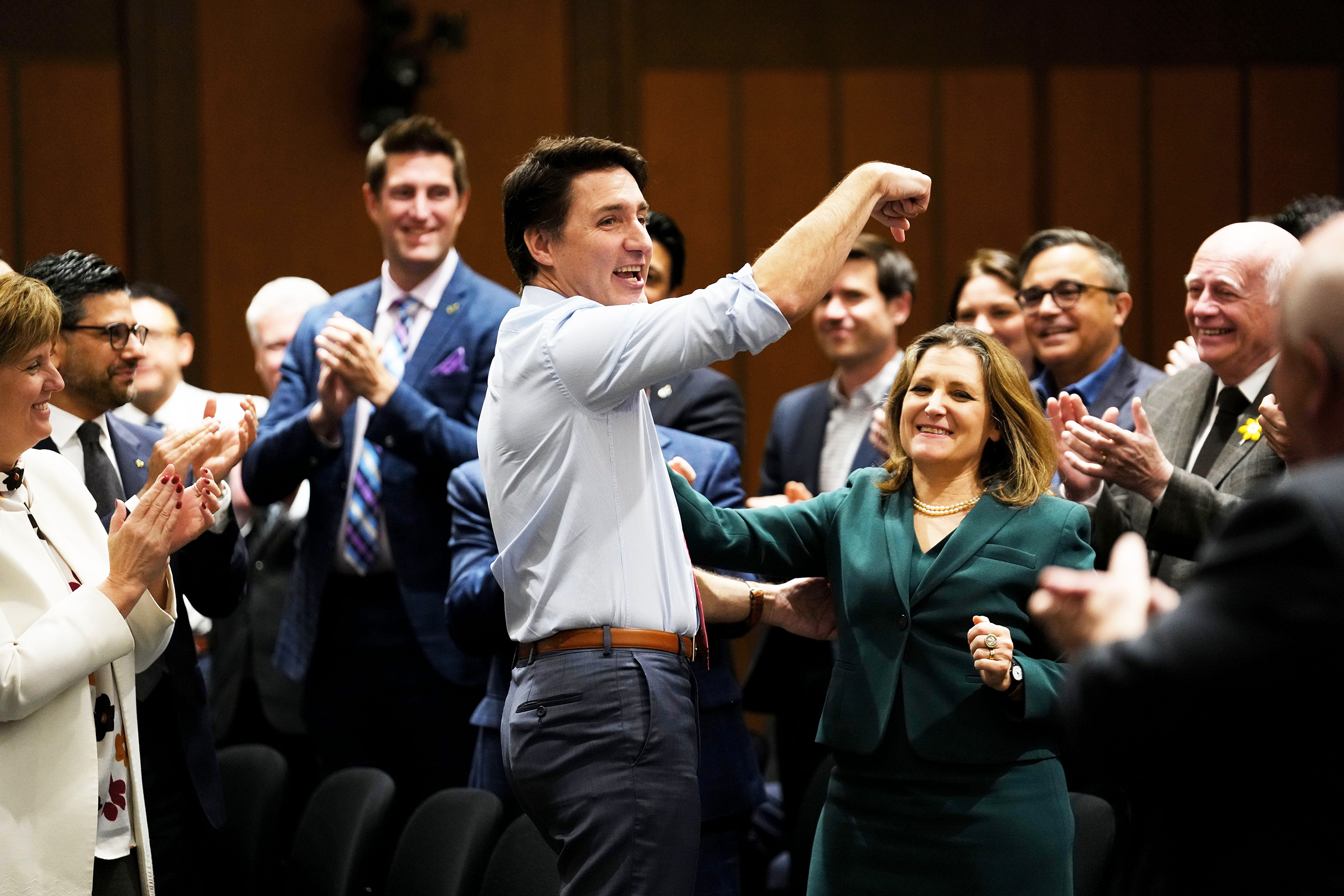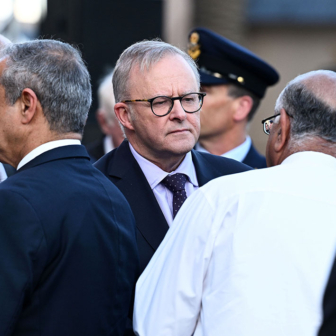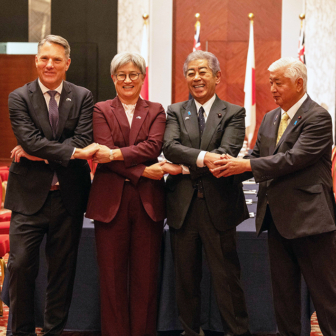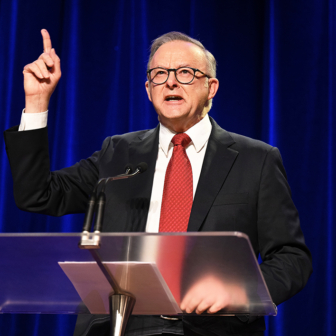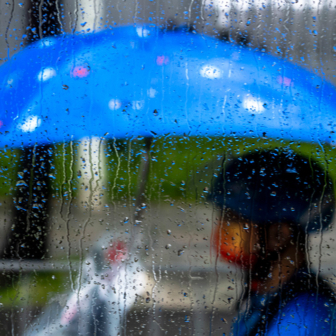Donald Trump has yet to take office but he has already upended Canadian politics. His opening move came on 25 November, when he announced that on his first day in office he would impose 25 per cent tariffs on “ALL products coming into the United States” from Mexico and Canada. The pledge not only shook the two targeted countries but also reverberated across the globe. A few days later the Canadian media buzzed with rumours that prime minister Justin Trudeau was making an impromptu trip to Mar-a-Lago for a post-Thanksgiving dinner with Trump and his advisers. Although reports of the dinner were positive, Trump’s plans appeared not to change.
Canada survived the aggressive trade policies of the previous Trump administration with much effort and angst. As it faces a second round, though, it lacks the political unity that carried it through the first. The country is entering its own political transition, with Trudeau’s popularity spiralling downwards and his government falling apart. As of this writing Trudeau remains prime minister and leader of his Liberal Party, but his time in power is dwindling and everyone — except perhaps the PM himself — knows it.
Canada’s political disarray was obvious in the chaotic reaction to Trump’s tariff bombshell, with leaders scattering in all directions. While Trudeau launched his preferred tactic, the charm offensive, by inviting himself to dinner, his occasional parliamentary partners, the New Democrats, called for a “war room” to “fight like hell.” Conservative leader Pierre Poilievre, leading by a wide margin in the polls, criticised Trump’s threat while declaring it another reason why the country needed an immediate change in leadership. And provincial premiers made their own incoherent contribution: Ontario Progressive Conservative premier Doug Ford threatened to cut off electricity exports to northern US states but fellow conservative Alberta premier Danielle Smith rejected any cut in oil and gas exports.
Canadians were also quick to throw Mexico under the bus, arguing privately and sometimes publicly that there was no comparison between the two borders, and that Canada, too, was worried that Chinese manufacturers were using Mexico as a backdoor entry. Annoyed Mexican diplomats responded by calling for a united front.
The business community’s reaction was more measured. Horrified by the potential devastation wrought by 25 per cent tariffs on an economy deeply integrated with the United States, but having survived the previous Trump trade drama, most called for another unified approach: “Team Canada” would acknowledge Trump’s underlying concerns about border security and insufficient defence spending while accelerating the perpetual campaign to educate America political leaders about the extent of the intertwining of the two economies.
Many Canadian policymakers conceded that Canada could indeed do better on enforcing the border and increasing defence spending. But opinion was more divided on the question that characterises all dealings with Trump: whether his announcement was a calculated bluff or a real plan in the face of reason and reality.
The debate about how to confront the tariff threat dominated Canadian public discourse for the first half of December. But not the second. At 9.07 am on Monday 16 December, Trudeau’s deputy prime minister and finance minister, Chrystia Freeland, announced her immediate resignation from cabinet. Unusually for Canadian politics, Freeland released a stinging letter to Trudeau stating that “you and I have found ourselves at odds about the best path forward for Canada” and specifically citing the tariff threat.
Freeland’s other bombshell was the revelation that Trudeau had told her he no longer wanted her to serve as finance minister. Throughout the Trudeau years, Freeland has been his go-to minister for crises, leading the renegotiation of the North American Free Trade Agreement, or NAFTA, in the first Trump administration, redeployed as intergovernmental affairs minister to deal with regional tensions, and then appointed finance minister to lead the post-pandemic recovery.
Trudeau had indeed told Freeland that he was once again shifting her to the hottest topic of the moment, this time a ministerial post specifically dealing with Canada–US relations. But the position came without a department or other established portfolio, and Trudeau had not included her in his Mar-a-Lago entourage. He also told Freeland he had a new finance minister in mind: Mark Carney, the former governor of the Bank of Canada and then of the Bank of England, who has made no secret of his interest in high elected office.
The most bizarre twist and the sharpest insult to Freeland was Trudeau’s timing: she was scheduled to deliver Canada’s autumn economic update, essentially a mini-budget, on Monday afternoon, a task the prime minister apparently still wanted her to do before she cleared her desk for Carney. Her abrupt morning resignation meant the country lacked a finance minister for the several hours until public safety minister and Trudeau loyalist Dominic LeBlanc was given the job late in the afternoon. The ministerial speech accompanying the update was cancelled and copies were distributed without government comment.
Trudeau’s catastrophic mishandling of Freeland amid the dire economic threat may be the final dimming of his dwindling star. The Liberal Party has polled terribly since mid-2023 and recently lost by-elections in formerly safe Toronto and Montreal seats. With the Conservatives on track for a huge majority, the Liberals are likely to do worse than their previous historic low of 2011.
It was Justin Trudeau who brought them back from that near-oblivion with the triumphant majority victory in 2015 that vaulted him to global celebrity status. A decade later, reaching the end of his second minority government, the glow is gone. But he has resisted calls to step aside. The Liberal Party has no mechanism to challenge a sitting leader and, while others want to replace him, there is no single rival to lead the rebellion. Freeland could join a distinguished club with former Liberal finance ministers John Turner and Paul Martin, who also resigned or were pushed out by prime ministers but later returned to take the job themselves. But their departures were not amid a crisis.
Donald Trump is quick to perceive and exploit weak spots, and he doubled down on his tariff bombshell with an even more alarming idea: annexing Canada entirely. A week after the Mar-a-Lago dinner, he referred to Trudeau as “Governor” of the “Great State of Canada,” and on 18 December posted “Many Canadians want Canada to become the 51st State. They would save massively on taxes and military protection. I think it is a great idea. 51st State!!!”
Nothing could strike more deeply at the Canadian soul. Nineteenth-century Canada’s foreign policy was dominated by fears of and resistance to American territorial expansionism; twentieth-century Canadians were preoccupied with differentiating their country culturally and socially from its neighbour to the south. The 1988 federal election was Canada’s most existentially challenging ever, dominated by fears that a proposed free-trade agreement with the United States would lead to absorption. Free-trade proponents won the day, and the globalisation trend of the early twenty-first century diminished fears of American ties.
But the shift in global trade winds and the rise in American protectionism, promoted by Democrats as well as Republicans, has left Canada anxious and exposed. Trump never mused about annexation in his first term, but perhaps the uneasy Canadian reaction to December’s remark about statehood told him he was on the right track. Even if it was nothing more than Trumpian bombast, it boosted Canadian blood pressures and increased the chaotic climate of anxiety and hysteria about how to respond.
Well before Trump’s re-election, Canada had begun enacting new border and immigration restrictions, including a drastic tightening of international student visas and new attempts to control unauthorised crossings of the porous land border. The autumn economic statement included a C$1.3 billion (A$1.5 billion) package of new border security plans. In a follow-up announcement the next day, new finance minister LeBlanc, still holding the public safety portfolio, made the point clear by saying “We have taken note of President Trump’s comments.” The government had less to say about Trump’s demands for a rapid increase in defence spending. (Canada has long lagged many of its NATO counterparts, never coming close to the long-set floor of 2 per cent of GDP.)
The mechanics of imposing an instant 25 per cent tariff by 20 January are unclear, especially as it would almost certainly violate the Canada–US–Mexico free trade agreement, or CUSMA, negotiated in 2018 to replace NAFTA by the previous Trump administration alongside Canadian representative Chrystia Freeland. But CUSMA is up for renegotiation in 2026; whatever the meaning of Trump’s immediate threat, it is clearly an opening salvo for those negotiations.
Difficulties surrounding the original CUSMA negotiations led Trump to declare Trudeau “dishonest and weak” during his first term and dismiss Freeland by saying “We don’t like their representative very much”; after Freeland’s December resignation, Trump posted that “her behavior was totally toxic, and not at all conducive to making deals which are good for the very unhappy citizens of Canada. She will not be missed!!!” While no one has any illusions that it is easy to do coherent business with Donald Trump, perhaps it is indeed time for a new negotiating team.
But it is not clear when change will come. Freeland’s resignation set off a chaotic week in Canadian politics. Trudeau had already faced calls by a few of his MPs to step down, and the number grew to twenty-one of his 153 member caucus by the end of the week. He cancelled his scheduled year-end interviews with various media outlets.
On Wednesday, newly minted finance minister LeBlanc announced he was keeping his new job and that Carney would not be joining the cabinet. A long-awaited reshuffle on Friday to deal with other political retirements, in which Carney was likely meant to be the centrepiece, promoted eight MPs to ministerial posts, no doubt disappointing others who had hoped to be rewarded for loyalty to the boss. More dissenters emerged, though it was difficult to grasp the full extent of rebellion. A letter to Trudeau from the chair of the twenty-three member Atlantic regional caucus, for example, said “our Caucus is of the view that it is not tenable for you to remain as the Leader” without clearly stating if the view was unanimous.
Trudeau clearly is losing support, and both Freeland and the elusive Carney are reported to be actively organising leadership bids. But for the moment only a minority of MPs openly oppose him, and even if they were a majority they lack the means. While the Conservative Party allows a direct caucus challenge and vote on the leader — leading to the demise of Poilievre’s predecessor Erin O’Toole in 2022 — the Liberals have repeatedly rejected adopting this mechanism, despite the slow insurrection waged by Paul Martin against Jean Chrétien a quarter century ago in the absence of any other option to challenge the leader. Even after a resignation, Canadian leadership contests, with their mass-member votes, normally take many months.
And the Liberals don’t have many months. The nominally fixed date for the next election is 20 October, but the government has only a minority of seats in the House of Commons, and the New Democrats, who have propped up the Liberals up since 2022, withdrew from their confidence-and-supply agreement last September. Facing their own problems in the polls, the New Democrats hemmed and hawed through the Canadian autumn about bringing down the government, and leader Jagmeet Singh finally announced on 20 December — after the House had risen for the holidays — that he was ready to move a motion of no-confidence in the government (though he was silent on whether this included supporting motions by other parties). The Bloc Québécois, which had some success extricating policy concessions from the Liberals in turn for parliamentary support, is now also committed to bringing down the government.
The House of Commons is scheduled to resume sitting on 27 January, with the Conservatives certain to test Singh’s promise at the first opportunity. The Conservatives may also pursue a backdoor option of proposing a motion of non-confidence through the public accounts committee. This rickety plan is unlikely to be accepted by the government as a true confidence test, but the lack of written rules to guide Canadian practice leaves it plausibly open.
For his part, Trudeau has a long-shot option of postponing a loss of confidence by proroguing parliament for a few weeks or months — a tool used in the past by both major parties to get out of sticky situations, though the Liberals’ 2015 platform promised to stop the practice. The only widely acceptable reason for prorogation would be to accommodate a Liberal leadership race.
Even though 20 January looms, Canadian politics is primarily inward-looking at the moment. While “Team Canada” is slowly coming together to respond to Trump’s threats, it lacks decisive and stable leadership. Instead, all eyes are on Trudeau and whether he will accept that his caucus is slowly but relentlessly turning against him, that the parliamentary clock is ticking, and that the polls indicate disaster. Yet throughout 2024 he resisted hints that it was time to go, and those supposedly privy to his inner thinking reported he continued to see himself as the best option for the party.
The Freeland catastrophe didn’t appear to weaken that resolve. “Like most families, sometimes we have fights around the holidays,” he said at the Liberal parliamentary holiday party, where the departing Freeland was mobbed for selfies. “But of course, like most families, we find our way through it.” And he seemed to believe it. •
